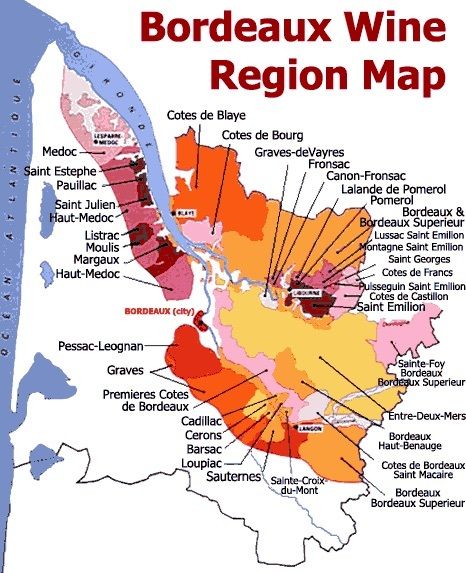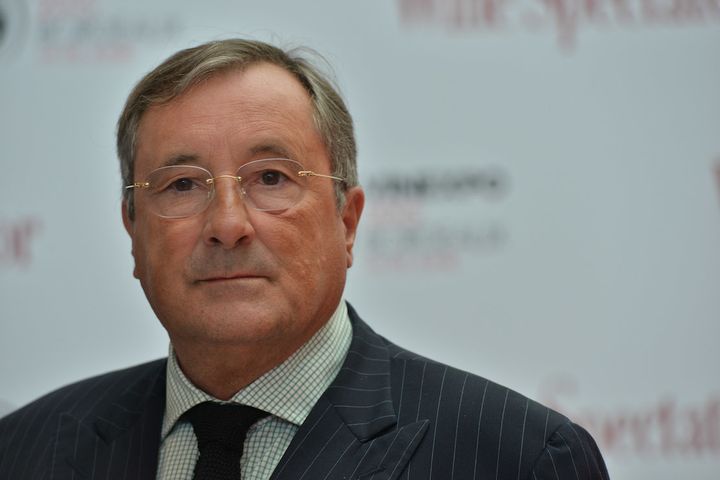
The City of Bordeaux
I will readily admit to being a Francophile over a wide range of topics—history, art, architecture, land- and seacape, food and, not least, wine, which is something of a first love because when I was in my salad days it seemed appropriate to drink French wine, after getting over a transient infatuation with Mateus Rose, Blue Nun Liebfraumilch and Bolla Soave.
By the late 1970s, though, not only was more and more interesting wine coming in from Italy, but the California wine revolution was in full swing, given an enormous boost by the blind match-up of California cabs against French Bordeaux at the so-called “Judgment of Paris” tasting of 1976, when the former beat out some of the latter in overall points.

This, however, did little to help the not-so-famous labels from wineries hundreds of years old keeping proud traditions of Bordeaux blending alive, despite sagging sales. Stupidly, those same wineries believed that by raising the prices, without justification, more wannabe wine lovers would want the wines. Who was going to pay $50 or $60 for a Château Smith Haut Lafitte when it doesn’t sound like the real McCoy, Lafite-Rothschild?
Things turned around—not radically, but to a sure degree—when the euro weakened and the global market became glutted, leading Bordeaux vintners to drop their prices and lesser appellations—spread over 7,375 châteaux, like Côtes de Bordeaux and Bordeaux Supérieur— began shipping more selections to the U.S., where they went into the wine shop bargain bins. This has really resulted in a great boon to Francophiles like myself, for never has there been more variety available at such reasonable prices.
According to data to be discussed in June at VINEXPO in Bordeaux, the industry’s premier bi-annual event, with regard to overall wine sales:

• Premium wines expected to see the most growth in 2017.
• Spurred by a burgeoning wealthy class, China is projected to drive global consumption of still and sparkling wine to 2020, at a growth rate of 4.5 percent.
• Asia-Pacific is expected to be the key growth region in absolute volume terms, ahead of previous leader, the Americas.
• Still, the Americas will drive value growth (from $44 billion in 2016 to $49 billion in 2020), with the premium segment to see the most short-term gain.
Over dinner in New York, Xavier de Eizaguirre (below), president and chairman of VINEXPO, confirmed to me that while the U.S. is the largest consumer of French red wine, China is indeed the market of the future and had helped cushion the damage done by the world-wide recession of 2008.

“At first the Chinese were buying only the prestigious First Growths [of Bordeaux],” he said. “But as of 2008 they began buying up a lot of the Second through Fifth Growths, too, and they even bought Bordeaux estates and shipped their entire production of wine back to China.”
He did note that the French, who before World War II drank 150 liters of wine per year per person, now consume only 50 liters. “Of course, the pre-war consumption was largely plonk; the French drink much better wine now, spending on average five to six euros for a bottle.”
What’s more, improvement not only in viticulture but in investment by new owners has not just restored many lagging châteaux but brought them to levels of quality they may never have had.
This year’s VINEXPO runs June 18-21, with a first-ever WOW! Segment of the exhibition dedicated to organic and biodynamic wines; a “Focus on Riesling; and Spain will be showcased as the “Country of Honor.”
A good Bordeaux does not give its charms away full frontal. Some seem quite shy, restrained, even one-dimensional. But they do taste like wines carefully blended by tradition from several varietals—usually cabernet sauvignon, cabernet franc, merlot, and petit-verdot—in percentages that change each year to achieve a consistency in the chateau’s style.

This was evident at a recent Wine Media Guild lunch in New York, where the winemakers Patrick Maroteaux of Château Brainaire-Ducru (a 4th Growth from Saint-Julien), Fabien Teitgen of Smith Haute Lafitte (a Cru Classe from Graves) and Eméline Borie of Grand Puy Lacoste (a 5th Growth from Paullac) brought various vintages of their wines and talked about the 2016 vintage, which won’t be released for years.
All three insisted 2016 will be even a better year than 2015, which itself was considered a very fine vintage. “The 2016 was not an easy vintage,” said Teitgen, “because we had frost in the spring, rain in June, various problems in August. It could have been a disaster. But early autumn favored the grapes, and it has turned out to be very good.”
One must always take such pronouncements with a degree of skepticism, for it is extremely rare for winemakers anywhere to denigrate a vintage. Instead, they might describe a poor vintage as “classic, with some very good individual wines made,” which means it was not a good year but that you might find some exceptions; the hope is, by the time the vintage is in the stores, years hence, buyers would forget the bad years and only remember the really great ones, which occur far more often than they used to.
